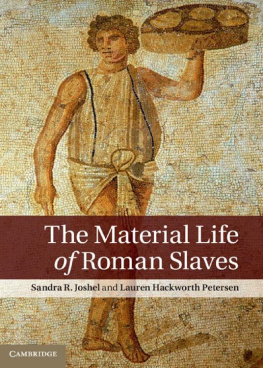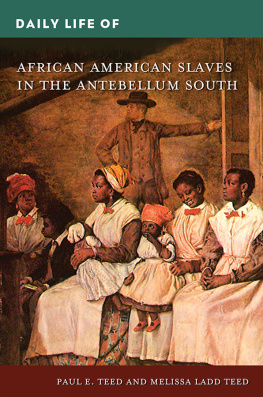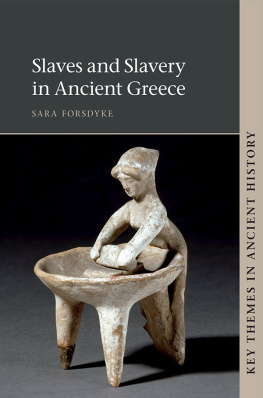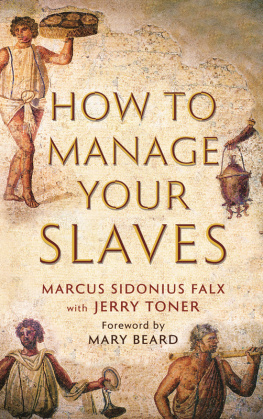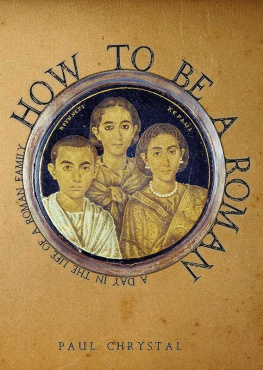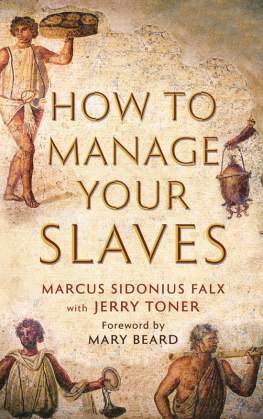The Material Life of Roman Slaves
The Material Life of Roman Slaves is a major contribution to scholarly debates on the archaeology of Roman slavery. Rather than regard slaves as irretrievable in the ruins of ancient Roman cities and villas, the book takes the archaeological record as a key form of evidence for reconstructing slaves lives and experiences. Interweaving literature, law, and material evidence, the book searches for ways to see slaves in these various contexts to make them visible where texts tell us they were in fact present. Part of this project involves understanding how slaves are often actively, if unwittingly, left out of guidebooks and scholarly literature. Individual chapters explore the dichotomy between visibility and invisibility and between appearance and disappearance in four physical and social locations urban houses, city streets and neighborhoods, workshops, and villas.
SANDRA R. JOSHEL is Professor of History at the University of Washington in Seattle. A scholar of Roman slavery, women, and gender, she is the author of Work, Identity, and Legal Status at Rome: A Study of the Occupational Inscriptions and Slavery in the Roman World and editor of Women and Slaves in Greco-Roman Culture: Differential Equations (with Sheila Murnaghan) and Imperial Projections: Ancient Rome in Modern Popular Culture (with Margaret Malamud and Donald T. McGuire).
LAUREN HACKWORTH PETERSEN is Professor of Art History at the University of Delaware. A scholar of Roman art and archaeology, she is the author of The Freedman in Roman Art and Art History and editor of Mothering and Motherhood in Ancient Greece and Rome (with Patricia Salzman-Mitchell). She has received an ACLS Collaborative Research Fellowship, a Postdoctoral Fellowship from the Getty Foundation, and a Rome Prize from the American Academy in Rome.
To Michael L. Hackworth and Robert B. Joshel
The Material Life of Roman Slaves
Sandra R. Joshel
University of Washington
Lauren Hackworth Petersen
University of Delaware
32 Avenue of the Americas, New York, NY 10013-2473, USA
Cambridge University Press is part of the University of Cambridge.
It furthers the Universitys mission by disseminating knowledge in the pursuit of education, learning, and research at the highest international levels of excellence.
www.cambridge.org
Information on this title: www.cambridge.org/9780521191647
Sandra R. Joshel and Lauren Hackworth Petersen 2014
This publication is in copyright. Subject to statutory exception and to the provisions of relevant collective licensing agreements, no reproduction of any part may take place without the written permission of Cambridge University Press.
First published 2014
Printed in the United States of America
A catalog record for this publication is available from the British Library.
ISBN 978-0-521-19164-7 Hardback
Cambridge University Press has no responsibility for the persistence or accuracy of URLs for external or third-party Internet Web sites referred to in this publication and does not guarantee that any content on such Web sites is, or will remain, accurate or appropriate.
Publication of this book has been made possible in part with the assistance of the Department of Art History and the College of Arts and Sciences at the University of Delaware and the Department of History at the University of Washington.
Contents
Illustrations
Color Plates
House of the Chaste Lovers (IX.12.67), room g , east wall, Pompeii.
House of the Chaste Lovers (IX.12.67), room g , west wall, Pompeii.
House of the Triclinium (V.2.4), dining room r , north wall, Pompeii.
Plan of the House of the Menander (I.10.4, 1416) marked with routes of slaves, Pompeii.
Reconstruction of Via dellAbbondanza, Pompeii.
Plan of the area around the House of the Vettii (VI.15.1, 27), Pompeii.
Plan of the area around the House of the Menander (I.10.4, 1416), Pompeii.
Plan of the House of the Baker (VI.3.3, 27) marked with locations of workers, Pompeii.
Painted pier from the fullery at VI.8.20, Pompeii.
Plan of the Fullery of Vesonius Primus (VI.14.2122) marked with locations of workers, Pompeii.
Plan of the area around the House of the Baker (VI.3.3, 27), Pompeii.
Plan of the bakery at I.13.4 marked with locations of workers, Ostia.
Plan of Villa A at Oplontis (Torre Annunziata) marked with routes of slaves.
Plan of the Villa of the Mysteries marked with routes of servants, early stage, Pompeii.
Plan of the Villa of the Mysteries marked with routes of servants, later stage, Pompeii.
Plan of Villa A at Oplontis (Torre Annunziata) marked with routes of waiters.
Figures
Preface
It was... hard to observe borders, to see and unsee only what I should, on my way home. I was hemmed in by people not in my city, walking slowly through areas crowded but not crowded in Besel. I focused on the stones really around me that I had grown up with. I ignored the rest or tried....
... Unseeing, of course, but I could not fail to be aware of all the familiar places I passed grosstopically, the streets at home I regularly walked, now a whole city away, particular cafs I frequented that we passed, but in another country. I had them in background now, hardly any more present than Ul Qoma was when I was at home. I held my breath. I was unseeing Besel. I had forgotten what this was like; I had tried and failed to imagine it. I was seeing Ul Qoma.
CHINA MIVILLE, The City & the City
In The City & the City , a novel by China Miville, the cities of Besel and Ul Qoma exist side by side. At points, areas of the cities overlap and interweave, so the same street, albeit with a different name, can belong to both. Although no wall separates the two cities, the people of Besel must have no visual or physical contact with the people of Ul Qoma: in the terms of the novel, they must not breach. Thus, two people may live, grosstopically, next door to each other... , each in their own city,... never breaching, never quite touching, never speaking a word across the border (134). From childhood, the inhabitants of each city learn the key signifiers of difference in order to see only the buildings, people, animals, and vehicles in their own city and to un-see everything in the other city. Yet, as a weary Inspector Tyador Borl of Besel makes clear, un-seeing takes effort because nothing but unseeing others with care or polite unsensing separates the sights and sounds of his own Besel from those of the supposedly alien Ul Qoma. And when Borl officially crosses over to Ul Qoma, he must see what he has always un-seen and un-see what he has always seen.
The Material Life of Roman Slaves is a book about seeing and un-seeing in the terms imagined by Miville, but we talk about slaves and owners rather than the inhabitants of different cities that are really the same. We consider how we have been trained to recognize owners and the free in the archaeological record of ancient Italy and how we learn to ignore the slaves who were grosstopically in the same places. In the following chapters, without making owners or the free disappear, we look for the slaves whom we have been taught to un-see. In a way, then, at least metaphorically to borrow Mivilles language, this book breaches the divide between owners and slaves to live in between the two.

